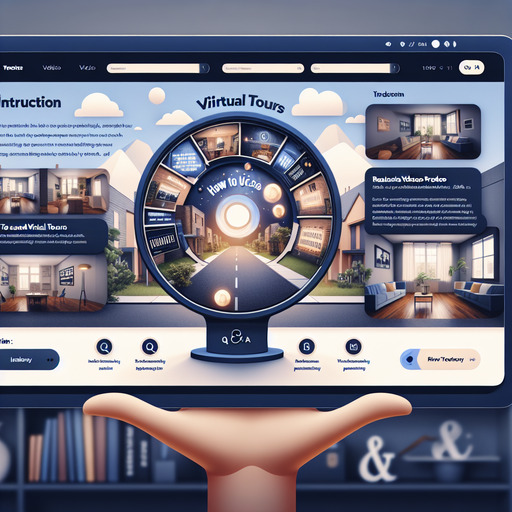
-
Table of Contents
Discover the power of virtual tours in real estate videos to captivate potential buyers and showcase properties like never before. Elevate your real estate marketing strategy today! Learn more here.
Introduction
In the rapidly evolving real estate market, leveraging advanced technology has become essential for staying competitive and meeting the demands of tech-savvy clients. One such innovation is the use of virtual tours in real estate videos. Virtual tours offer a dynamic and immersive way to showcase properties, providing potential buyers with a comprehensive view of a home without the need for a physical visit. This method not only saves time and resources but also broadens the reach to a global audience. By integrating virtual tours into real estate videos, agents can create engaging, interactive experiences that highlight the unique features of each property, ultimately enhancing the buying process and driving sales. This guide will explore the benefits of virtual tours, the tools required, and best practices for creating compelling real estate videos that captivate and convert prospective buyers.
How to Use Virtual Tours in Real Estate Videos: A Comprehensive Guide to Real Estate Video Production, Marketing, and Videography Tips
Virtual tours have revolutionized the real estate industry, offering potential buyers an immersive experience that static images simply cannot match. To effectively use virtual tours in real estate videos, it is essential to understand the nuances of video production, marketing strategies, and videography techniques. By integrating these elements seamlessly, real estate professionals can create compelling content that captivates and converts viewers into buyers.
To begin with, the foundation of a successful virtual tour lies in high-quality video production. Investing in professional-grade equipment, such as high-resolution cameras and stabilizing gimbals, ensures that the footage is crisp and smooth. Additionally, employing proper lighting techniques can significantly enhance the visual appeal of the property. Natural light is often the best choice, but supplementary lighting can be used to highlight specific features or brighten darker areas. Furthermore, using a tripod or other stabilizing equipment can prevent shaky footage, which can be distracting and unprofessional.
Once the technical aspects are in place, the next step is to plan the virtual tour strategically. This involves creating a storyboard that outlines the key areas of the property to be showcased. It is crucial to highlight unique selling points, such as spacious living areas, modern kitchens, or scenic views. By doing so, the virtual tour can guide viewers through the property in a logical and engaging manner. Additionally, incorporating smooth transitions between different rooms and areas can enhance the overall viewing experience, making it feel more cohesive and less disjointed.
In terms of marketing, virtual tours offer a unique opportunity to reach a broader audience. Sharing these videos on various platforms, such as social media, real estate websites, and email newsletters, can significantly increase visibility. Moreover, optimizing the video for search engines by using relevant keywords and tags can improve its ranking, making it easier for potential buyers to find. Engaging with viewers through comments and feedback can also foster a sense of community and trust, further enhancing the marketing efforts.
Videography tips play a crucial role in ensuring that the virtual tour is not only visually appealing but also informative. One effective technique is to use wide-angle lenses, which can capture more of the space and provide a better sense of scale. Additionally, incorporating voiceovers or on-screen text can provide valuable information about the property, such as the number of bedrooms, square footage, or special features. This can help viewers make informed decisions and feel more connected to the property.
Another important aspect to consider is the pacing of the virtual tour. Moving too quickly through the property can leave viewers feeling rushed and overwhelmed, while moving too slowly can cause them to lose interest. Striking the right balance is key to maintaining engagement. Using a combination of slow pans, zooms, and static shots can create a dynamic and visually interesting tour that holds the viewer’s attention.
In conclusion, using virtual tours in real estate videos requires a comprehensive approach that encompasses video production, marketing strategies, and videography techniques. By focusing on high-quality production, strategic planning, effective marketing, and engaging videography, real estate professionals can create virtual tours that not only showcase properties in the best light but also resonate with potential buyers. This holistic approach can ultimately lead to increased interest, higher engagement, and more successful sales.
Q&A
1. **How can virtual tours be effectively used in real estate videos?**
Virtual tours can be effectively used in real estate videos by providing a comprehensive, 360-degree view of the property, allowing potential buyers to explore the space remotely. They can highlight key features, offer interactive floor plans, and include detailed descriptions or voiceovers to guide viewers through the property. Integrating virtual tours into real estate listings can enhance engagement, attract more serious buyers, and streamline the decision-making process.